Pseudacysta Blatchley, 1926
Type species: Acysta perseae Heidemann
Body oval and elongate, head short, clypeus not surpassing apical half of first antennal segment; antennae longer than the length of pronotumpronotum:
dorsal sclerite of the first thoracic segment
, length of segment I subequal to that of segment II; cephalic spinescephalic spines:
a spine on the head
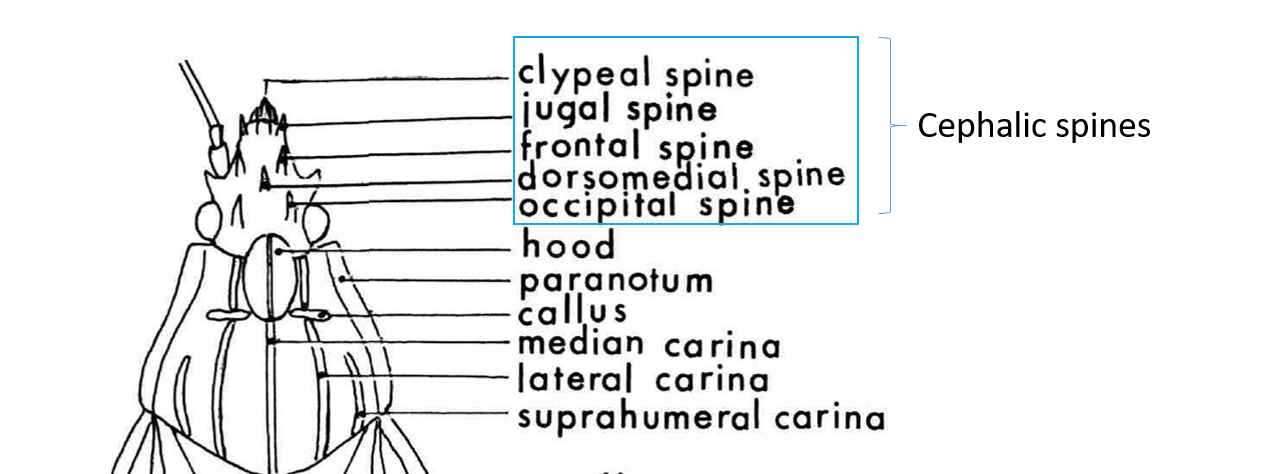 present; bucculaebucculae:
present; bucculaebucculae:
an elevated ridge on either side of the first labial segment
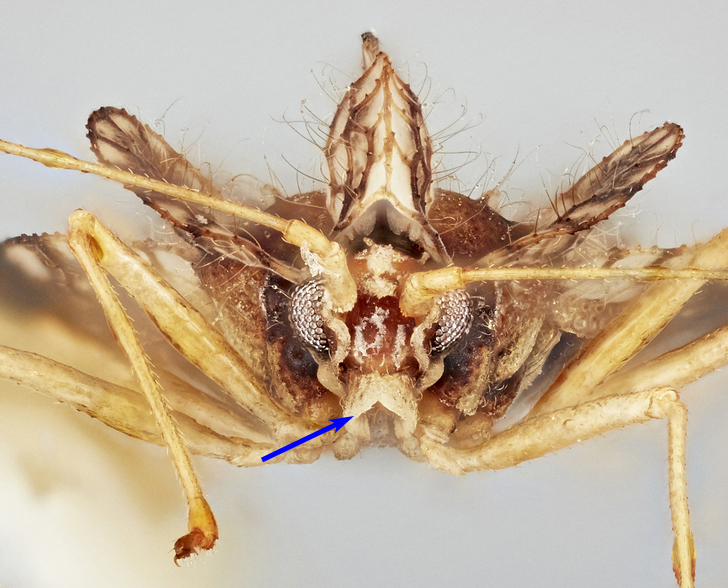 closed anteriorly; rostral sulcusrostral sulcus:
closed anteriorly; rostral sulcusrostral sulcus:
shallow furrow on either side of rostrum (labium)
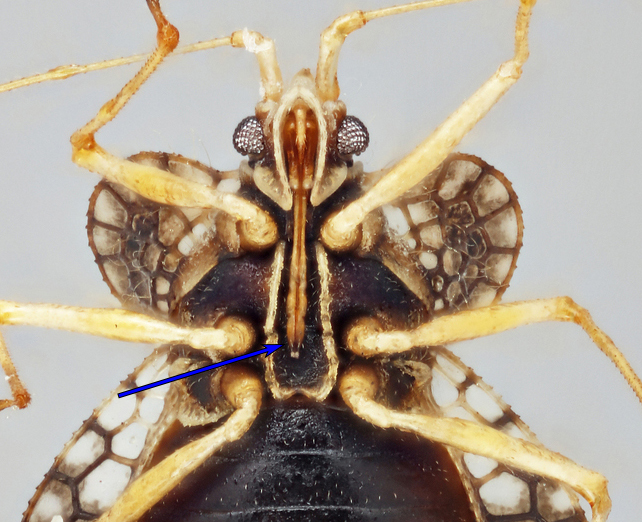 uninterrupted by a transverse carinacarina:
uninterrupted by a transverse carinacarina:
elevated ridge or keel
, enlarged on meso- and metasternum; pronotumpronotum:
dorsal sclerite of the first thoracic segment
unicarinate; pronotal hoodhood:
term used to describe the modified anterior area of the pronotum, which is sometimes tectiform and sometimes bulbous, with numerous intermediate conditions.
 absent; paranotumparanotum:
absent; paranotumparanotum:
lateral extension of pronotum; may be carinate, explanate, or reflexed
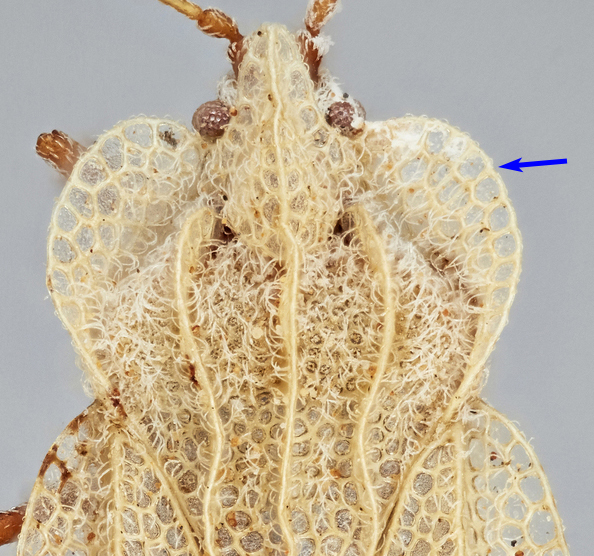 reduced to posterior projections with one or two areolae; spines absent along paranotal margin, anterior margin not projecting anterad; hemelytrahemelytra:
reduced to posterior projections with one or two areolae; spines absent along paranotal margin, anterior margin not projecting anterad; hemelytrahemelytra:
one of the basally thickened forewings of Hemiptera
with claval areaclaval area:
parallel-sided and sharply pointed anal area of hemelytron
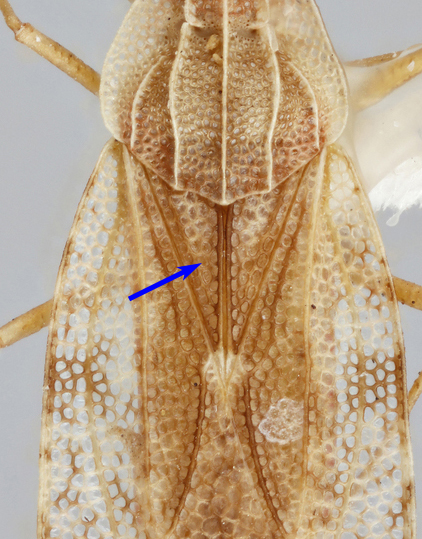 weakly developed, almost entirely covered by posterior margin of pronotumpronotum:
weakly developed, almost entirely covered by posterior margin of pronotumpronotum:
dorsal sclerite of the first thoracic segment
; costal areacostal area:
area of the costa delineated by the first longitudinal vein of the wing, usually running along the anterior margin
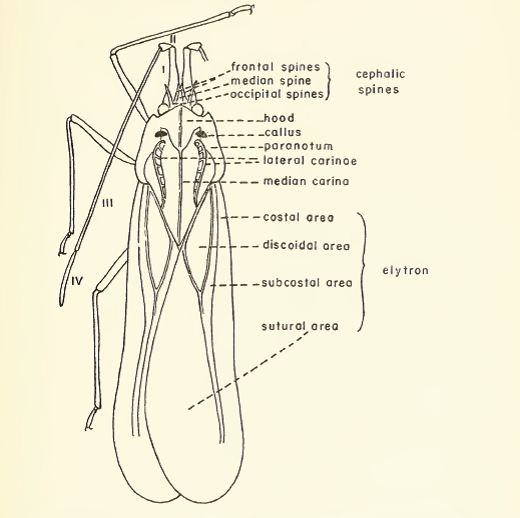 broad, with at least 3 rows of areolae; discoidal areadiscoidal area:
broad, with at least 3 rows of areolae; discoidal areadiscoidal area:
area of the forewing posterior to the subcostal area
 level, discoidal cell open behind, long, extending beyond the middle of hemelytra; hypocostal laminaehypocostal laminae:
level, discoidal cell open behind, long, extending beyond the middle of hemelytra; hypocostal laminaehypocostal laminae:
a ridge produced ventrally along costal margin
 extending beyond the apex of abdomen (Hurd 1946Hurd 1946:
extending beyond the apex of abdomen (Hurd 1946Hurd 1946:
Hurd, M. E. P. 1946. Generic classification of North American Tingoidea (Hemiptera-Heteroptera). The Iowa State College Journal of Science 20: 429-493.).
Nearctic, Neotropical - the Caribbean (Drake and Ruhoff 1960Drake and Ruhoff 1960:
Drake, C. J., and F. Ruhoff, A. 1960. Lace-bug genera of the world (Hemiptera: Tingidae). Proceedings of the United States National Museum 112., Drake and Ruhoff 1965Drake and Ruhoff 1965:
Drake, C. J., and F. A. Ruhoff. 1965. Lacebugs of the World: A Catalog (Hemiptera: Tingidae) Bulletin of the United States National Museum: 1ndash;634., Guilbert 2019Guilbert 2019:
Guilbert, E. 2019. Lace bugs database - http://www.hemiptera-databases.com/tingidae, Knudson 2018Knudson 2018:
Knudson, A. H. 2018. The Tingidae (Hemiptera: Heteroptera) of southern Central America (with an emphasis on Costa Rica). Master#39;s thesis. North Dakota University. https://library.ndsu.edu/ir/handle/10365/28773)
| Intercepted species | Shipment origin(s) | Inspected host(s) |
|---|---|---|
| Pseudacysta perseae (Heidemann) | Bahamas, Cuba, Dominican Republic, Guadeloupe, Haiti, Honduras, Jamaica, Mexico, Puerto Rico, St. Lucia, Tortola | Abelmoschus sp., Annona muricata, Annona sp., Citrus limon, Citrus sp., Cucumis sp., Laurelia sp., Liatris sp., Momordica sp., Ocimum basilicum, Ocimum sp., Persea americana, Persea sp., Piper sp., Psidium guajava, Ricinus communis, Rosmarinus officinalis |
Drake and Ruhoff 1960Drake and Ruhoff 1960:
Drake, C. J., and F. Ruhoff, A. 1960. Lace-bug genera of the world (Hemiptera: Tingidae). Proceedings of the United States National Museum 112., Drake and Ruhoff 1965Drake and Ruhoff 1965:
Drake, C. J., and F. A. Ruhoff. 1965. Lacebugs of the World: A Catalog (Hemiptera: Tingidae) Bulletin of the United States National Museum: 1ndash;634., Guilbert 2019Guilbert 2019:
Guilbert, E. 2019. Lace bugs database - http://www.hemiptera-databases.com/tingidae, Knudson 2018Knudson 2018:
Knudson, A. H. 2018. The Tingidae (Hemiptera: Heteroptera) of southern Central America (with an emphasis on Costa Rica). Master#39;s thesis. North Dakota University. https://library.ndsu.edu/ir/handle/10365/28773